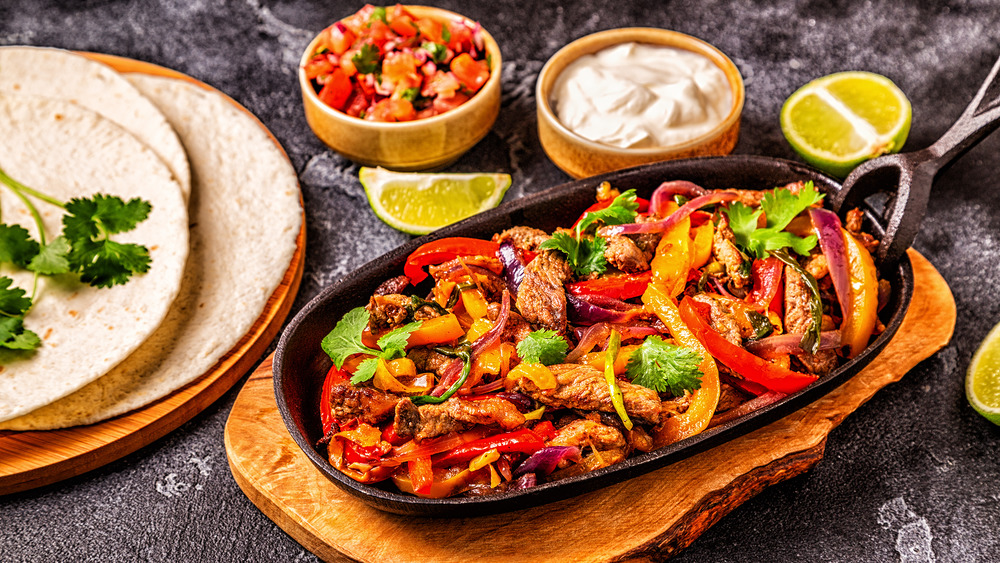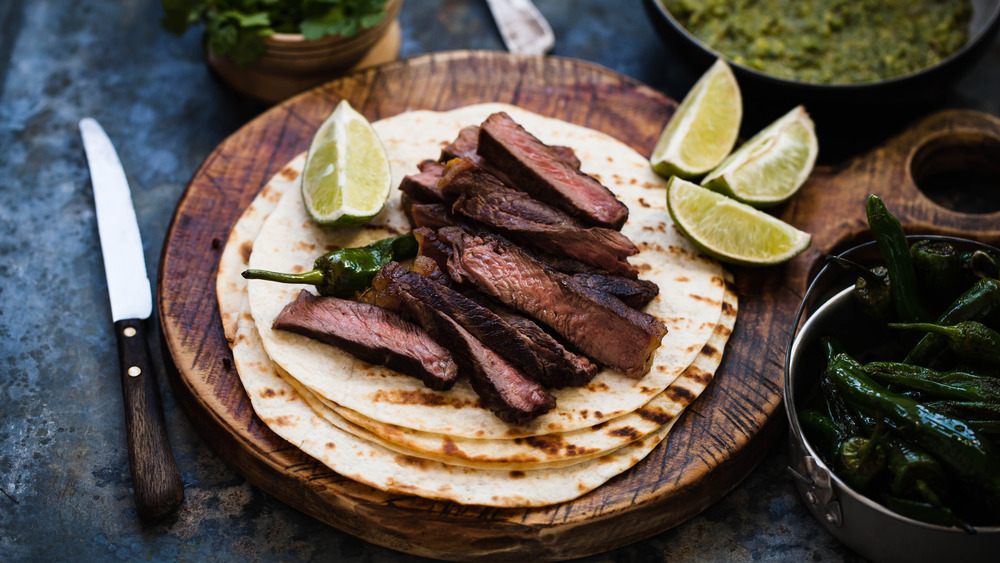You've Been Making Fajitas All Wrong
There once was a time when there was not a fajita to be found outside a backyard cookout. According to the Seattle Times, this sizzling fast-casual staple hadn't yet made it to the laminated menus of every Tex-Mex restaurant across the U.S. until the late '70s and early '80s. The outlet reported that fajitas were a leftover of ranching on the Texas border, when Mexican laborers were partially paid in cheap cuts of meat, which they'd grill and serve on warm tortillas.
It wasn't until 1982 that a chef at a Hyatt Regency in Austin added "Sizzling Fajitas" to the menu that this customizable meat and veggie dish took off (via the Austin Chronicle). Weirdly enough, fajitas didn't change much with the passage of time, and according to writer Martha Rose Schulman (via the Seattle Times), fajitas at most restaurant "came bearing the requisite grilled strips of skirt steak, chicken or shrimp, usually overcooked, with seared onions and peppers that were greasy and under seasoned." It's time to fix fajitas, starting with your own.
Some common fajita mistakes and fixes
We don't know what you're up to at home, but if you can't shake the same old greasy veggies or overcooked meat, you can try changing up a few steps. Some fajita home cooks complain of tough, inedible meat, and there's a few places they could be going wrong. First, the cut of meat: Skirt steak is best. It used to be a more affordable cut, but is now a little more expensive (via Bon Appetit), but one mistake you might be making is using flank steak — a tougher cut. Searing meat on a high heat is key to avoid overcooking it, and cutting it against the grain helps tenderize it even more (via The Spruce Eats).
Marinating the meat is also a key step — but never underestimate the power of citrus, like lime, which is used in a number of fajita recipes. Marinades help break down the meat with their acidity, but leave a marinade on for too long, and you risk making the meat mushy or actually begin to "cook" it (via Edible Paradise). Don't marinade for more than 24 hours — What's Cooking America recommends no more than two hours with citrus! The Spruce Eats suggests tossing veggies into the marinade bag with the meat, and drains them before searing on high heat — no greasy vegetables here.
Finally, the fixings are what make fajitas fajitas, so don't forget those warm flour tortillas and the toppings of your choice.

